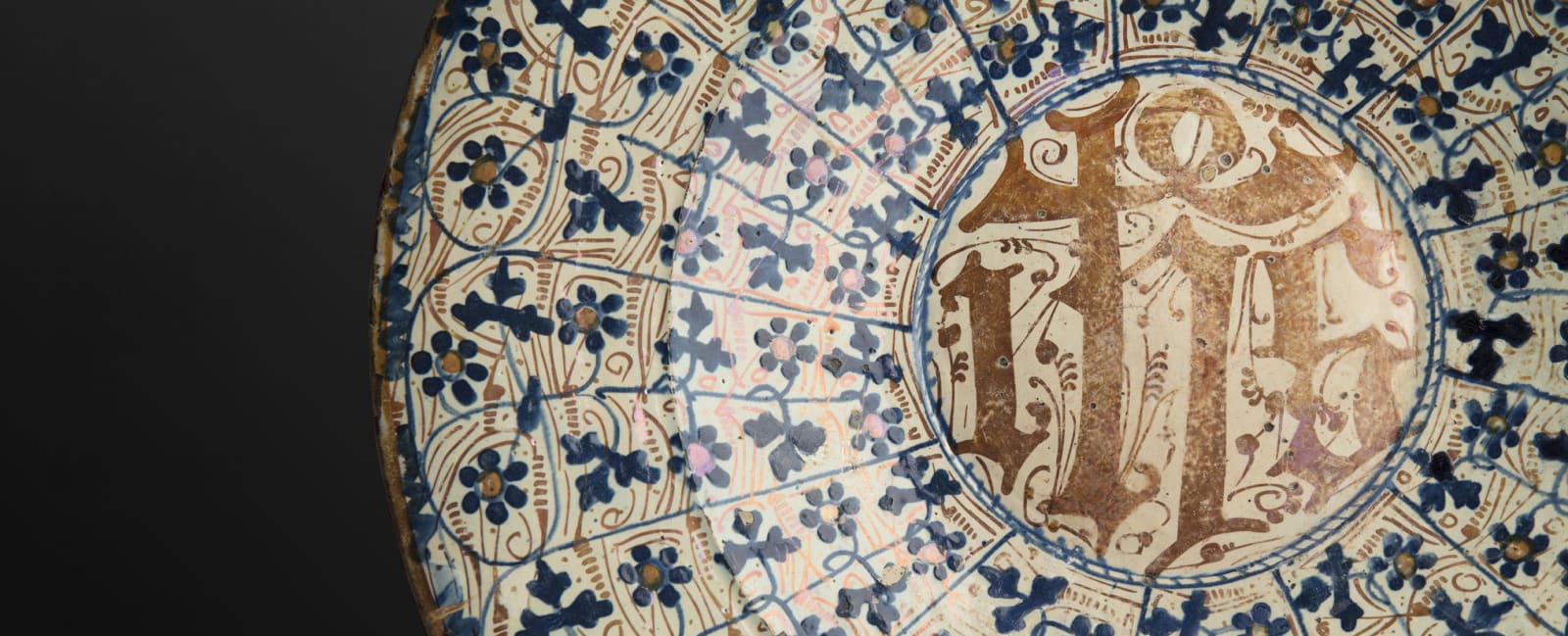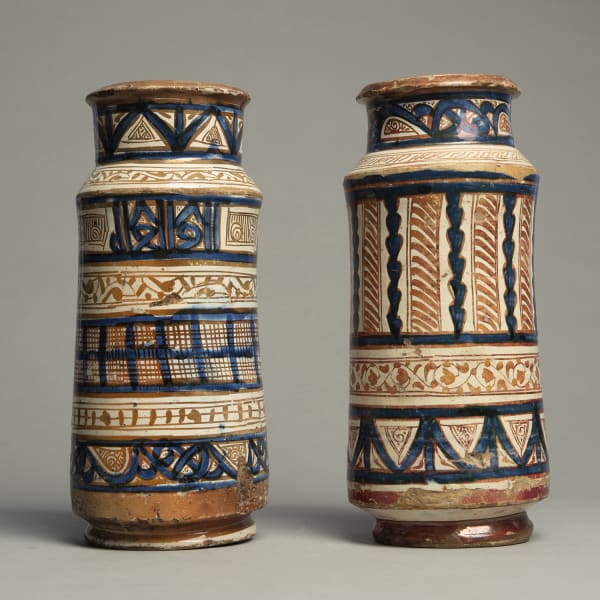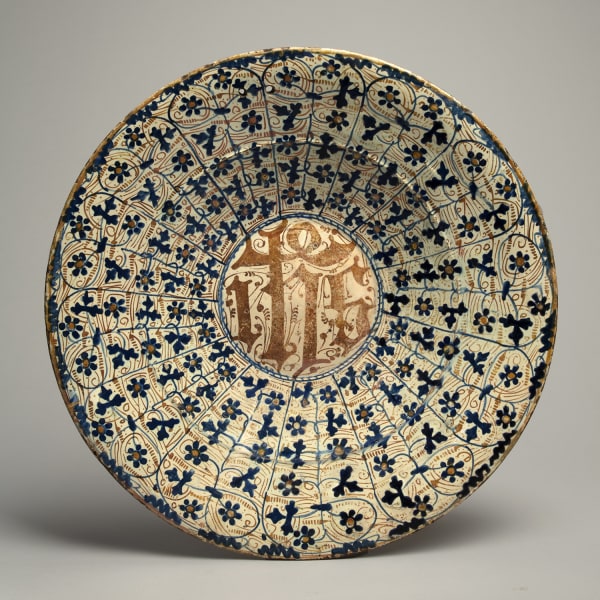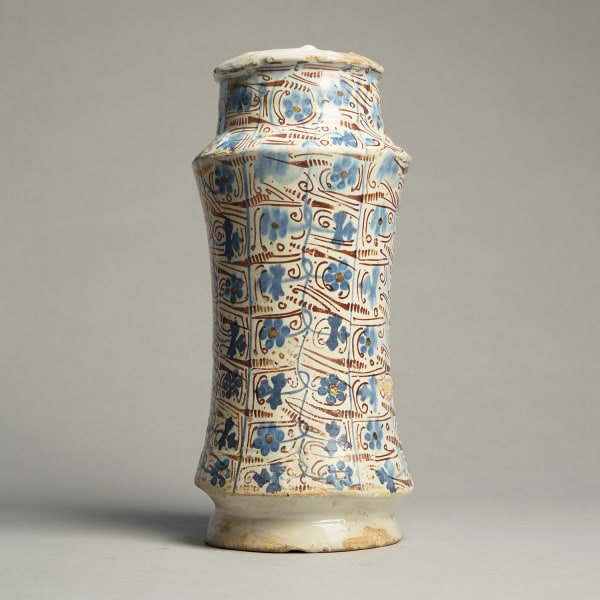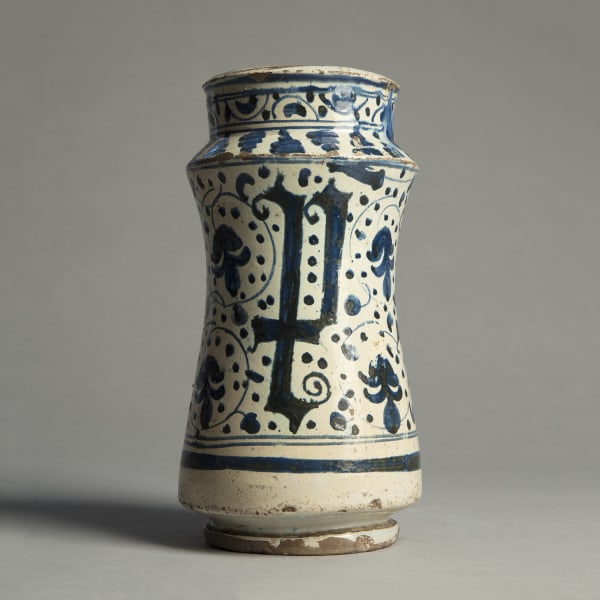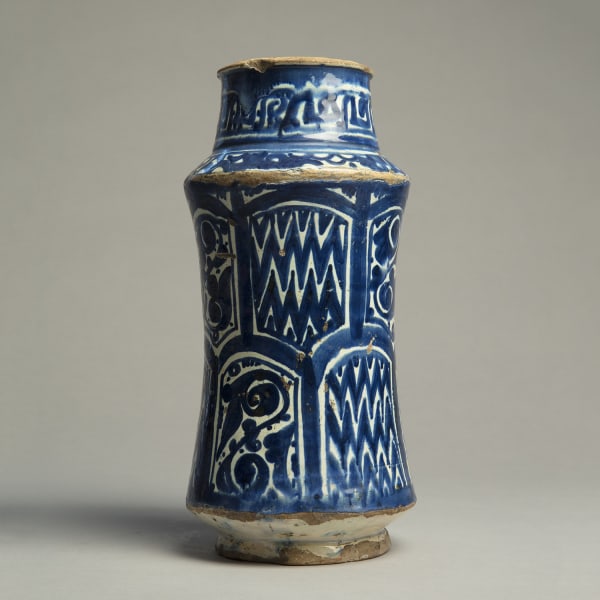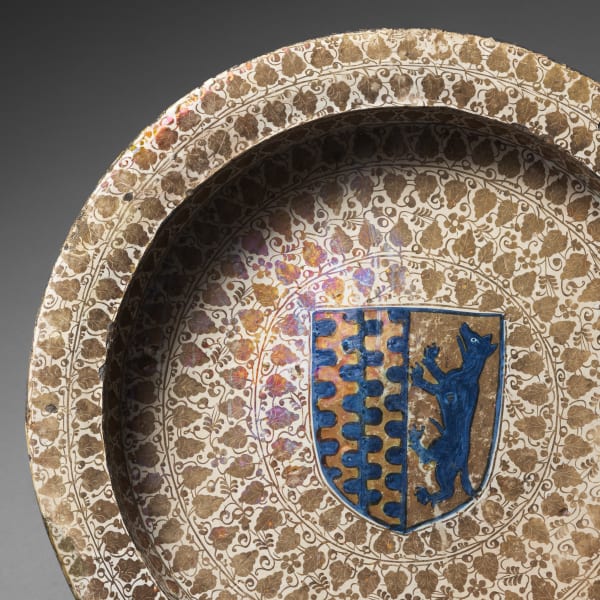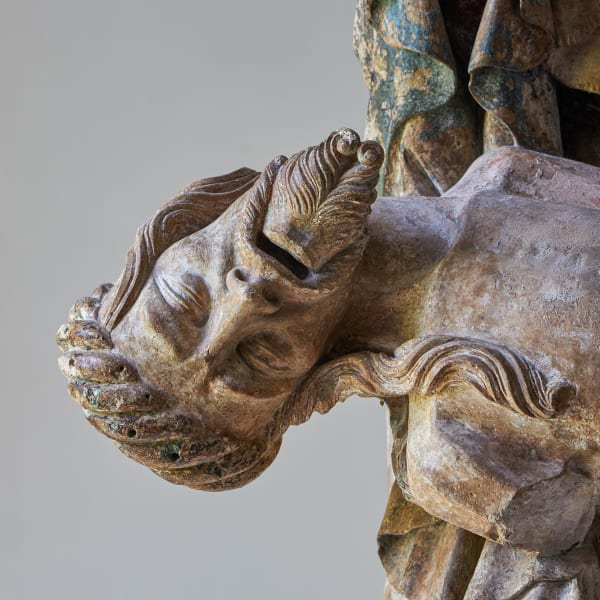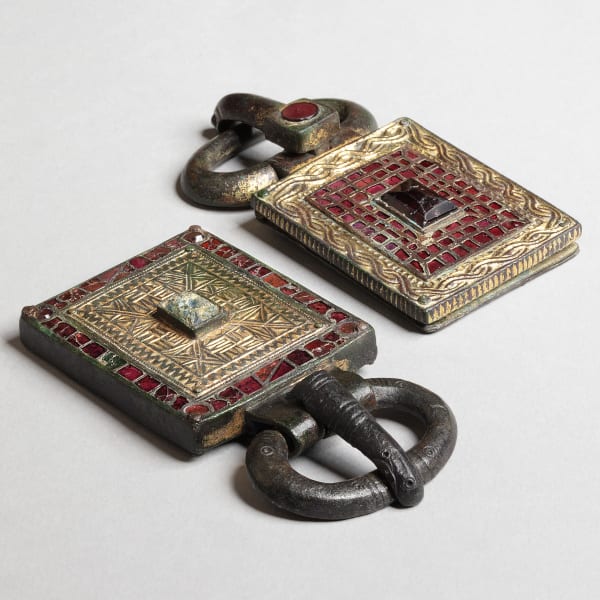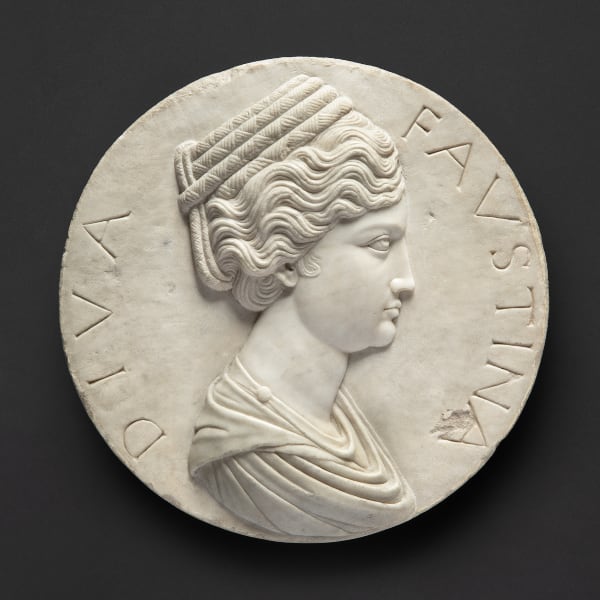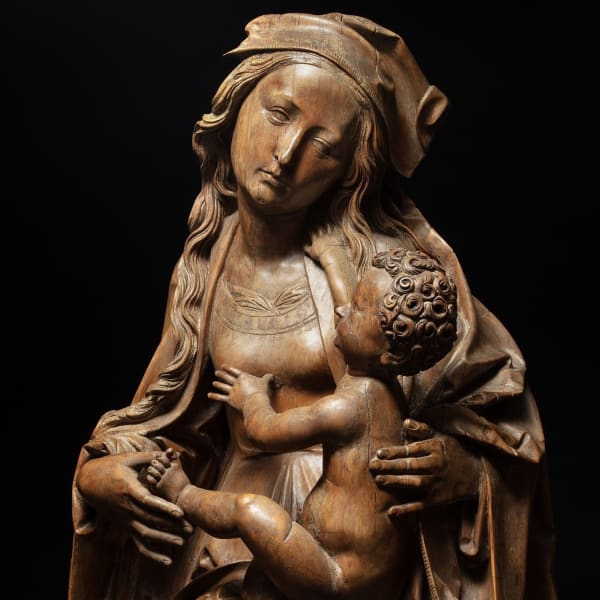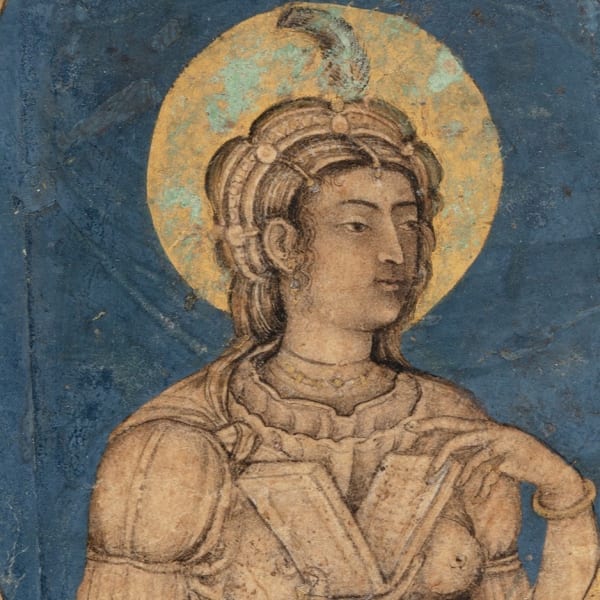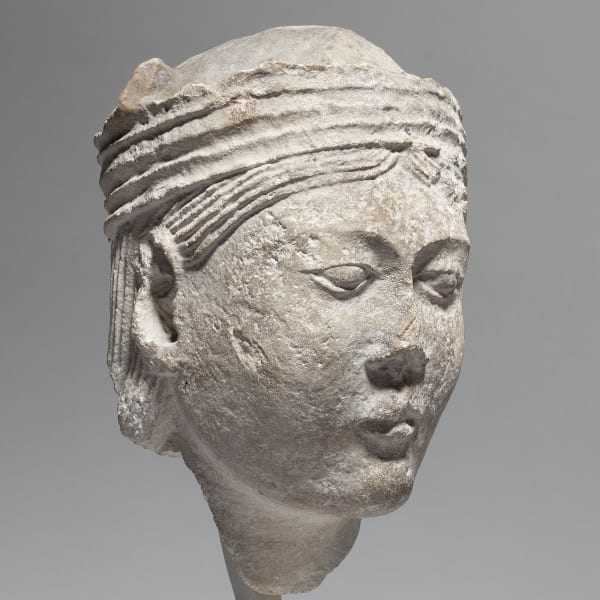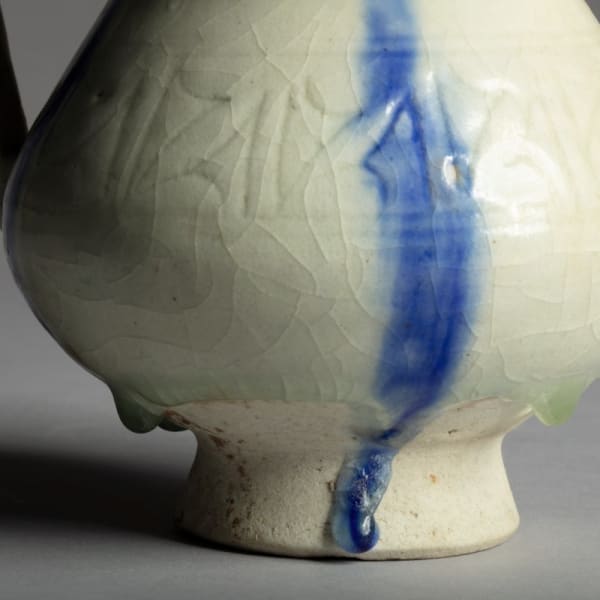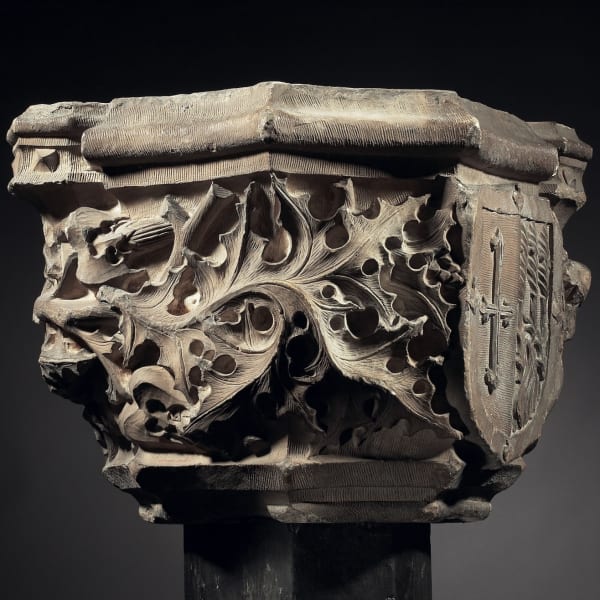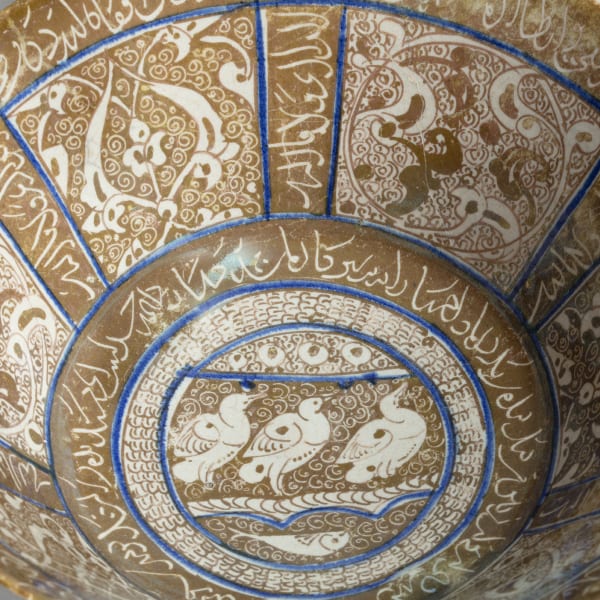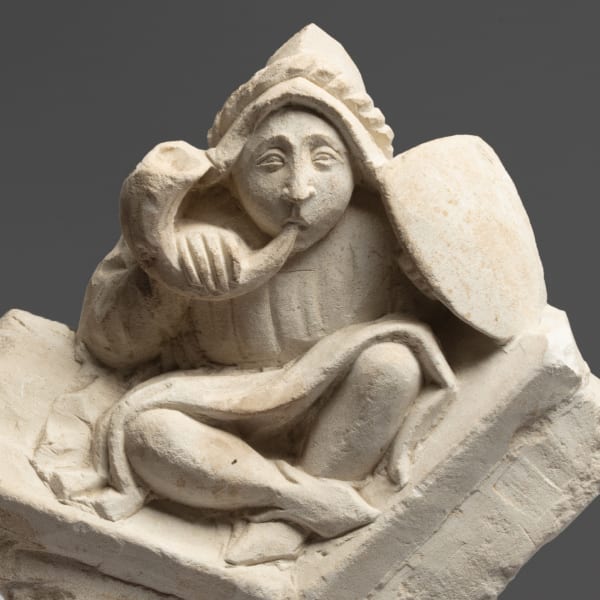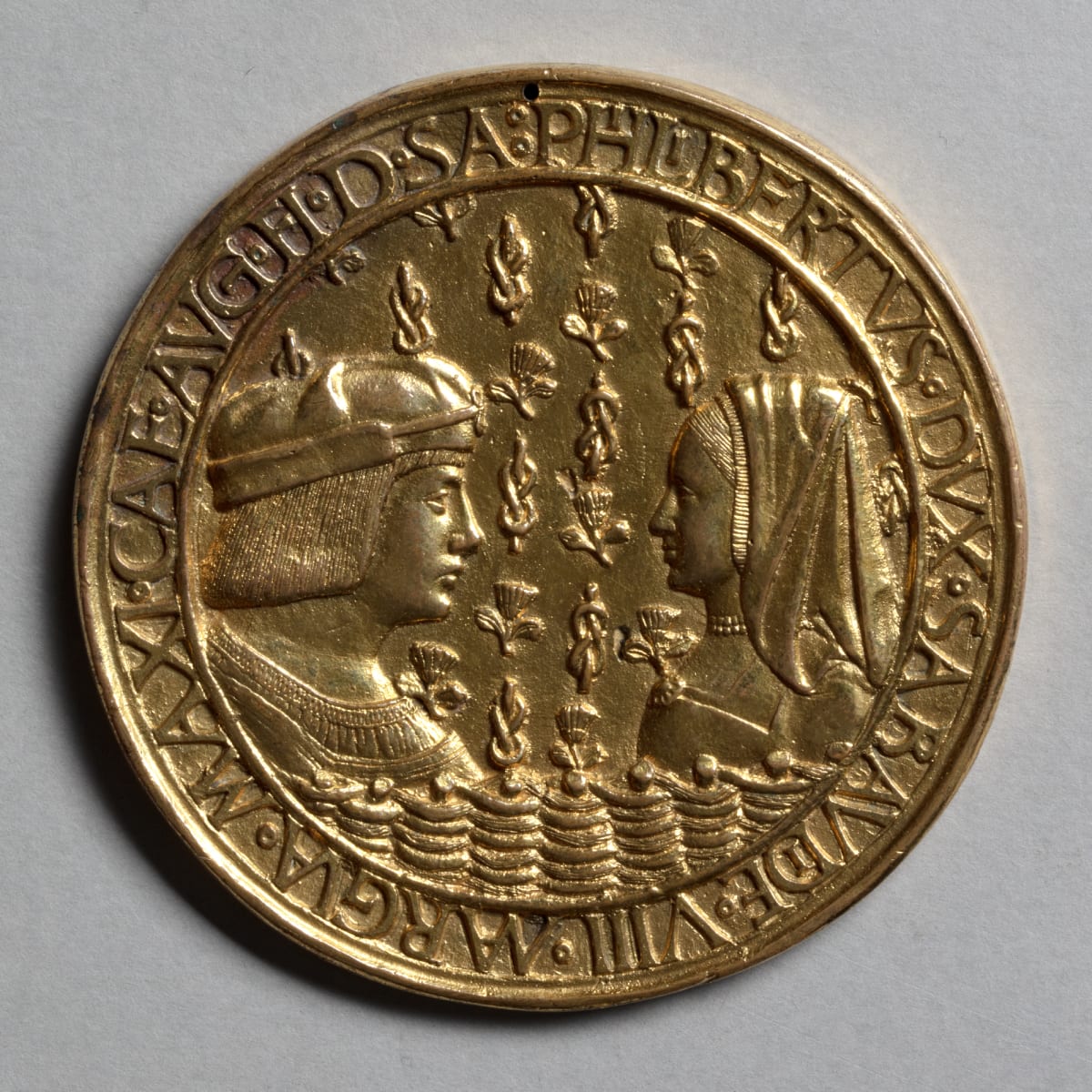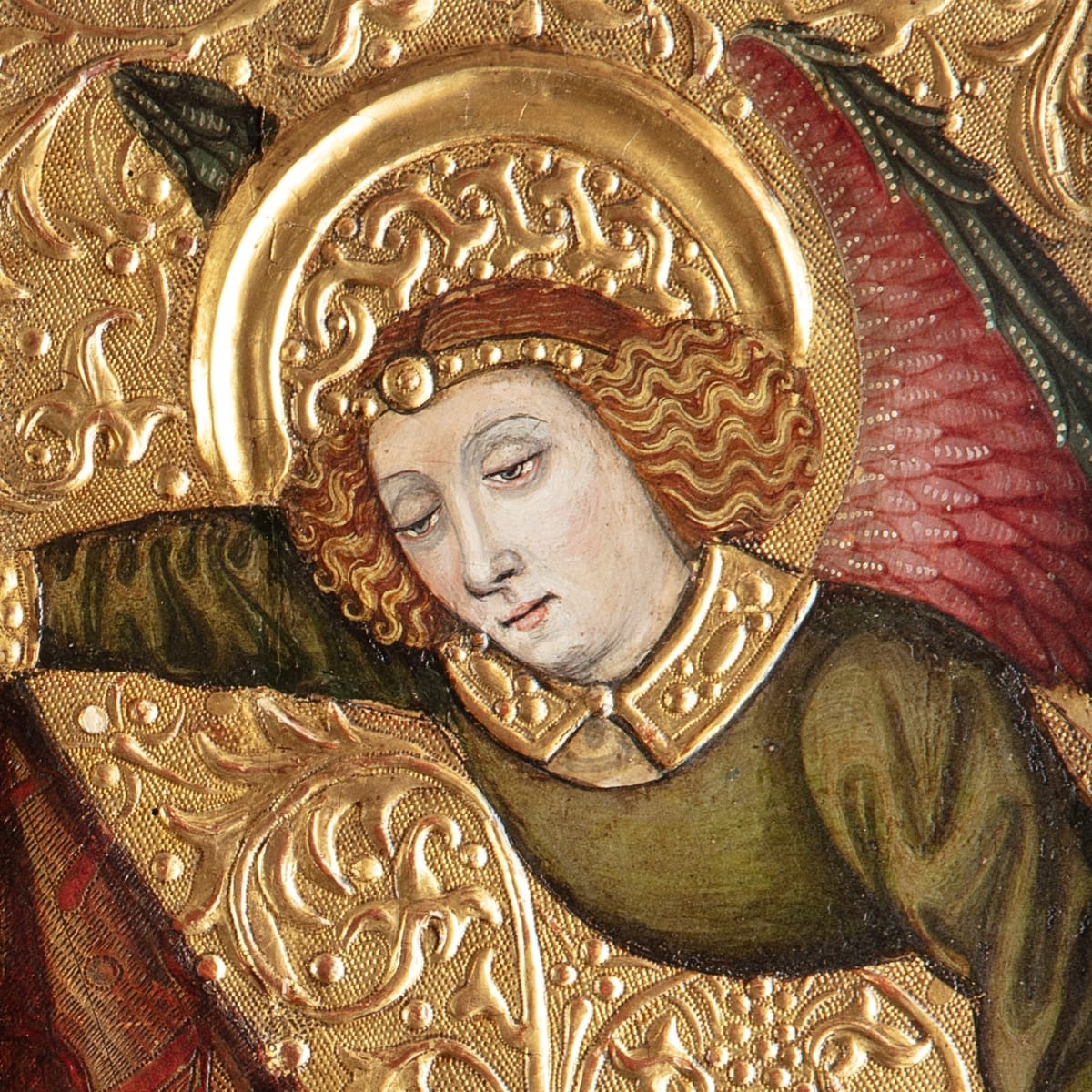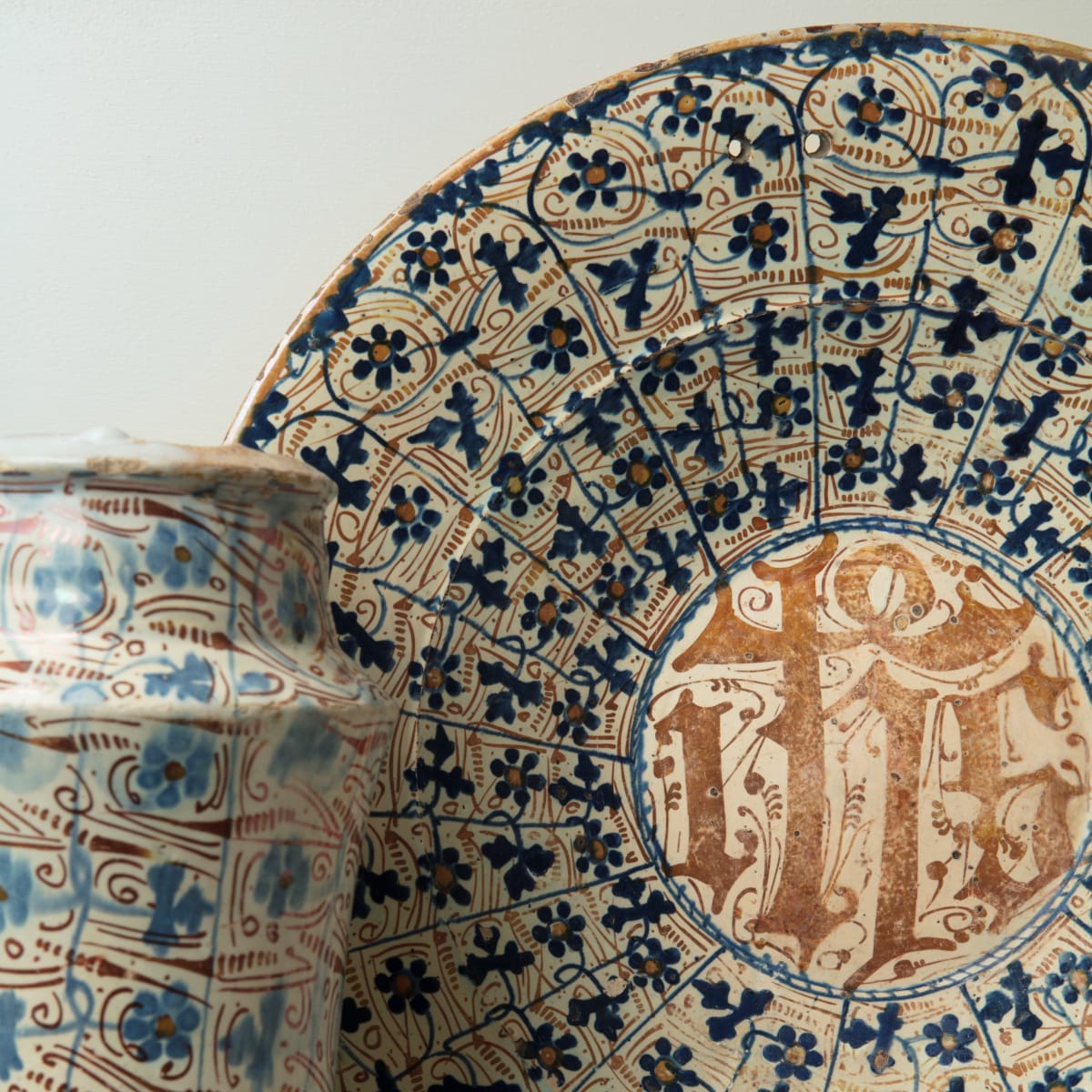
The Moorish potters of Medieval Spain, who were responsible for the thirteen vessels in this exhibition, were in high demand during the late Middle Ages. Their precious, brilliantly decorated ceramics, a class of pottery commonly described today with the terms ‘Hispano-Moresque’ and ‘lustreware’, enjoyed international renown. Two things were fundamental to the appeal of Hispano-Moresque ceramics in this period. The first was the unique language of their decoration – a remarkable hybrid of gothic elements, floral motifs and the occasional Christian inscription or emblem, with the dynamic pattern-making of the Islamic world. The second was their intensely exotic appearance. Their surfaces were meticulously embellished by hand using brushes loaded with a vivid blue pigment obtained by crushing cobalt glass, and then coated again with an extraordinary, lustrous sheen that flashes across the surfaces of most Hispano-Moresque ceramics like an iridescent fire. This almost alchemical effect is known as copper lustre, and is produced by applying a copper oxide mixture over the already-fired tin- and cobalt-based glazes before heating the ceramic a third time at low temperature in a kiln starved of oxygen. It is unclear exactly when the technique reached Valencia and its satellite towns of Paterna and Manises on Spain’s eastern seaboard, but thanks to the migration of Muslim potters north from the Nasrid court in Málaga over the course of the fourteenth century it became the epicenter of European production. In short, this complex, layered artform with a hybrid identity was created from the intermingling of Muslim and Christian cultures and containing centuries of human movement, struggle, and artistic invention in its decoration.
